The Creator of Plasticana Shoes Is a Really Chill Guy
A friendly conversation with André Ravachol.
Almost two years ago, when I sent out my first newsletter (which was way too long and all over the place), I wrote about my fascination with people wearing Plasticana gardening clogs around New York City in the summertime. Aren’t your feet steaming hot??
I accused the hemp jellies of being both impractical and “booger-colored,” and the brand’s founder, André Ravachol, took notice. He wrote me an open letter on his website, which nearly gave me a heart attack when I saw it. But it turns out that André is a cool French guy with a good sense of humor.
“We must therefore agree and…Hope for it! The behavior of others will remain and, fortunately, always unexpected,” he wrote, translating the letter into English from French. He also suggested different styles that might be less sweaty.
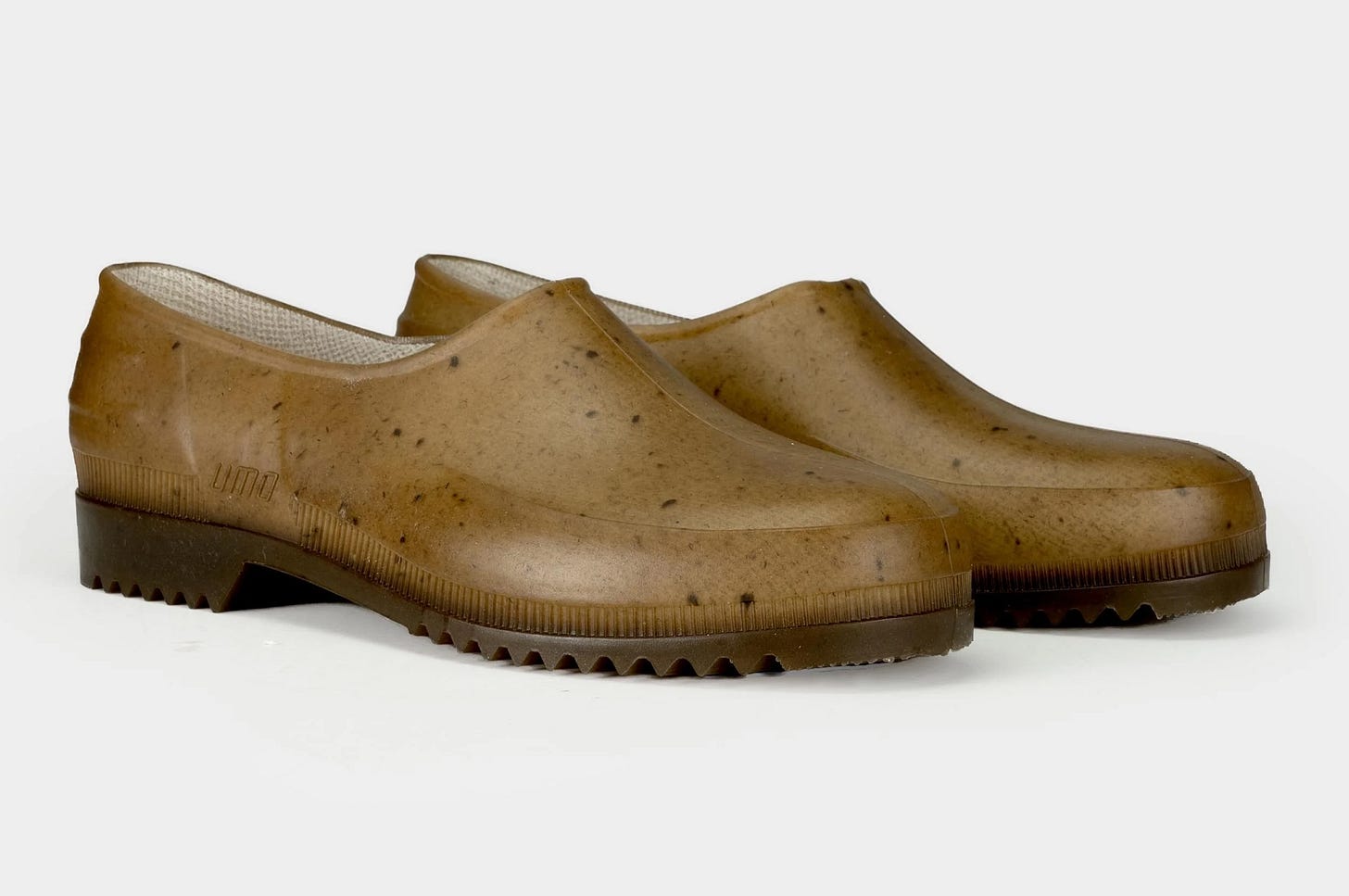
We then followed each other on Instagram, and he started DMing me news about the brand on a pretty regular basis, including its recent collaboration with JJJJound. I almost got used to it, and then I thought: Wait, I should use this as an opportunity to interview him!
Plasticana shoes have been written about at length, especially since they “took over Brooklyn,” as GQ declared last year, thanks to stores like Salter House and brands like Bode. But it’s hard to find information about André himself and why he started his brand in 1998.
André, based in Paris, is still the owner of the Plasticana brand and its website. However, he sold the footwear rights to the Humeau Beaupreau family and heritage group in 2008, which financed the brand’s promotion at trade shows until 2015. “Capricorns are resilient and tenacious; they do everything it takes to make a project last,” André explained. He reminded me that no new Plasticana styles have been released since 2009, which is a testament to both the integrity of André’s original design and his refusal to participate in the insatiable fashion cycle. “This is also why I have this paternal bond with them!”
Below is a translated version of my friendly conversation with André, in which he recalls his alternative roots and reveals that he doesn’t actually wear the Gardana clog himself. Merci, André pour votre temps!
Can you tell me a little about yourself and your background? What did you do before you founded Plasticana?
Oh la la, Emilia! You're making me want to look in the rearview mirror to remember the moments when the foundational stones of the Plasticana “house” were laid! What partly makes the Gardana clog so successful—the originality of not using it as a garden clog but as a city clog—well, this "original" spirit has always been with me!
I left school early, at 15. I joined what was then called in France the "beatnik" movement and its critique of consumer society: We were a group of teenagers who would meet in Lyon under a bridge on the Saône and play at being "clochards célestes!" I hitchhiked on the roads around 1966/67... Wearing long hair was, then, an act that marginalized you! I endured verbal abuse and physical threats, but I didn't react with violence. This appetite for "peace and love" was rewarded by the arrival of the hippie movement and the experience of communal living in southern France in 1974.
Soon after, to support myself, I began creating and handcrafting original mini leather bags. To further this path, I returned to school in 1980 in Paris—a city I haven't left since! I then created bag collections for the largest mid-range brand in France at the time—Sylvain Lefebvre. This forced me to compromise my originality a little to please as many people as possible, and above all, I experienced globalization firsthand, as I had to travel to Calcutta five times a year to create them!
In 1991, my originality peaked: I created bicolor crossbody bags made from truck tarps and leather, which were assembled on a wooden base by a clog maker. They had a red lining and were closed with a brass lock created for my brand by the workshop that supplies Louis Vuitton!
What prompted you to found Plasticana in 1998?
After 30 years of living in alternative movements, my mind was enriched by the era of the 1997 Kyoto Accords and traumatized by the dangers caused by excess CO2 in the atmosphere, as well as the overexploitation of raw material reserves. The conception of Plasticana followed my work for the shoe brand O.X.S., which launched the first shoe made from textile hemp in 1997. This originality came at a cost, as we had to find the right yarn in Hungary and have it specially woven in Bologna. I had read that a French laboratory dedicated to agriculture, Valagro, was conducting tests on mixing plants with plastics. Since the soles of O.X.S. shoes were made of plastic, I thought, why not use hemp?! After leaving O.X.S., I began my personal research in 1998 with the technical assistance of this same laboratory.
The results of the hemp blends were positive, and seeing the caramel-colored samples, I realized it was absolutely not necessary to mask it, but to make it THE flagship color of future products. In the fashion world, this is truly original: we have to make different colors every season!!!
This technical success forced me to elevate my thinking and impose on myself the vision that, since an invention existed, it had to be protected by a patent, and that I had to sell it to a plastics producer. Although I saw myriad objects that could be made, my goal from 1998 to 2000 was to sell my patent and the brand to the leading French petrochemical group at the time: Elf Atochem. I, the "non-educated" person, had to meet and negotiate with the most educated and skilled executives in the country! My naive mind hadn't understood one small detail, though: What interest would this group have in selling a material that would reduce the sales of its usual share of plastics by the same amount of hemp!? In short, I was kindly thanked... And I had to resign myself to the traditional route of having objects made from Plasticana and selling them myself!
When did you feel that you had “succeeded” as a brand?
As soon as an innovation sells, it means consumers recognize its usefulness. I believed in it as early as 2001, with my first sale of the sandal to a Swiss hemp cooperative, as well as to organic and pro-hemp stores.
In 2008, during sales negotiations in the footwear sector with the Humeau Beaupreau group, I felt Plasticana's identity was recognized. After that, the world leader in composite textiles, Serge Ferrari, included me in its Canatex yarn patent, which is still used today, particularly for making parasol canvas. But this time, it was about promoting the Plasticana brand name, and the merger with an industrial facility presented me with new responsibilities, as I had committed to representing the approach at international trade shows.
In 2009, a catalog of eight styles, unchanged to this day, was launched, all with names ending in Ana, the first name of my life partner.
Since 2015, I no longer provide this service, but I engage in “activism” by managing my generic website and, above all, my Chanvrorama newsletter on LinkedIn. Since 2005, I have defended the image of hemp used to manufacture materials, including textiles, construction, and plastics.
Are you a gardener? How do you wear your shoes?
Unfortunately, I don't grow potatoes and pumpkins in Paris! We are very lucky to have a tree-lined terrace with hazel, chestnut, maple, and more. It's a morale booster since our meager artist pensions force us to continue living in an apartment in a social housing building. It's the ideal place to wear the Opana open-toe clog. I've never worn the famous Gardana. In the summer, I wear the Méduse sandal on the sidewalks of Paris and Brittany, as well as my flip-flops from 20 years ago.
How did you feel when the brand suddenly “took over” New York and Brooklyn? Did you see it expand elsewhere first?
I didn't immediately make the connection with Emily Bode's fashion show and Salter House in Brooklyn—the first distributor of Plasticana shoes. Emily asked me for two models, ten days before her Paris Fashion Week show in January 2020: the Gardana sandal and clog. It was the latter that caught the eye of a GQ journalist, Gerald Ortiz, who then put himself on display wearing Prince of Wales trousers a few months later. Then the virus spread to Brooklyn and then to the main neighborhoods of the Global Village!!! I really liked that Brooklyn, the neighborhood where the original Henry Miller lived a century ago, was once again the scene of all this daring!
In the past, there was indeed an initial craze for the entire range of shoes in Japan in 2010 and in Sweden. But not to this extent.
Do you wear your shoes with socks? Do your feet sometimes get hot?
I don't wear those clogs! The jellies, yes, I wear socks to protect my feet from the dirt on the sidewalks.
How do you feel about the descriptions some people have used to describe your shoes, like “freaky,” and I believe I called them “booger-colored…”
Yes, yes, Emilia, you're also original with your post-nasal color references!! I don't remember any comments of surprise regarding the appearance from journalists in the early period (2002-2008). People had the reflex to pick up the shoe and sniff it curiously to check if it smelled like traditional plastic. (Indeed, there's often a characteristic licorice smell!) On the other hand, the ritual question I was asked when I was selling directly was: "Can you smoke these?"
How has the brand evolved since 1998? Where do you hope to see it in the next decade? Are you currently working on a new project that you're passionate about?
The brand's evolution isn't what I had hoped for: I envisioned a happy union of manufacturers with their specific product lines, complementing each other, reinforcing the strength of the Plasticana brand image through the variety of applications. The monopolization of the footwear sector must be reduced. I would be inclined to return to my first love of leather goods, and I'm attracted to a new style of multi-functional basket. Get back to me on it!
And for this decade, because of my "advanced age," I am especially concerned about the transfer of ownership of the Plasticana brand to the right and proper entity. There, I'm not being very original!!
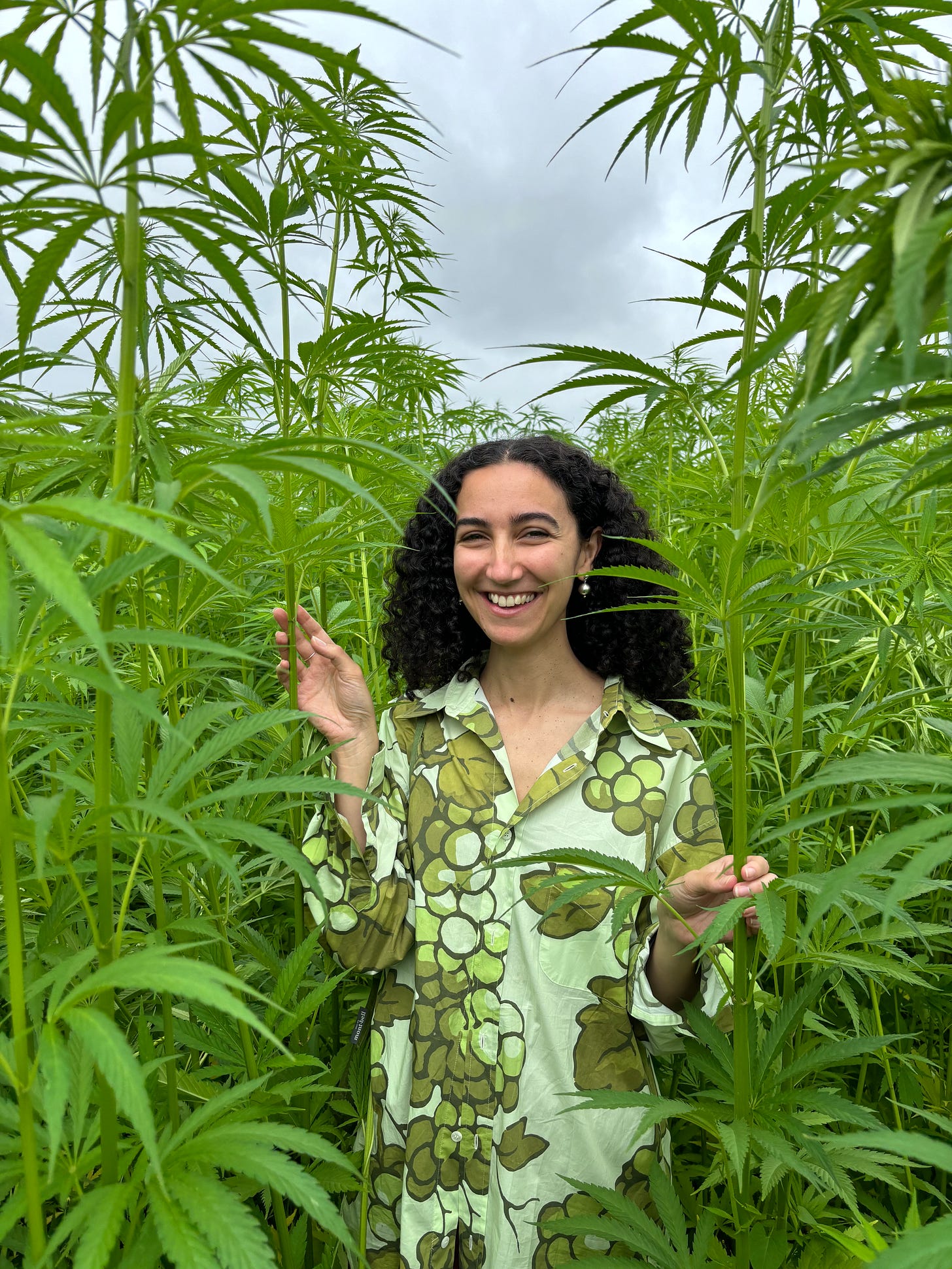
This conversation was translated from French to English by a robot.





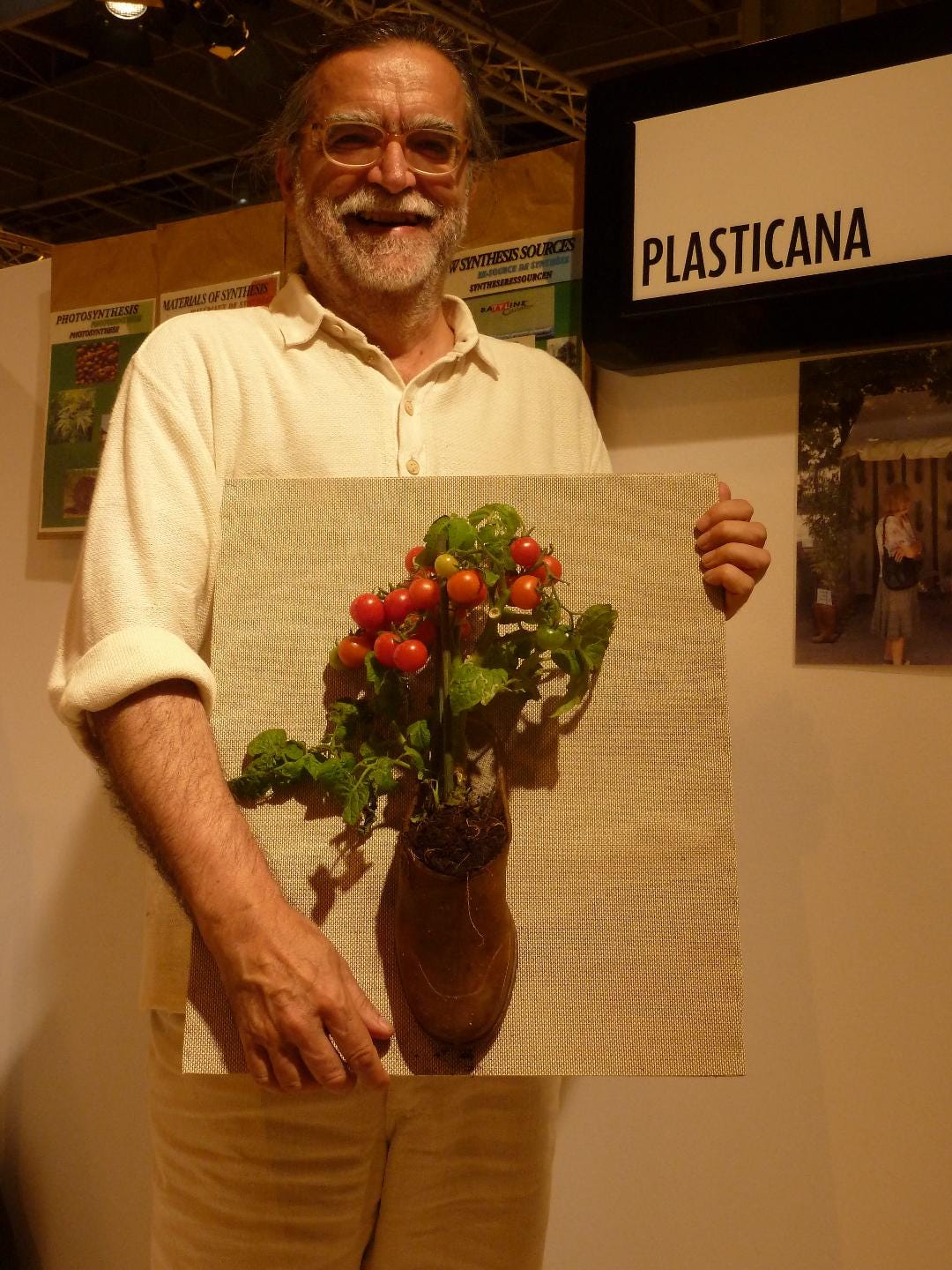
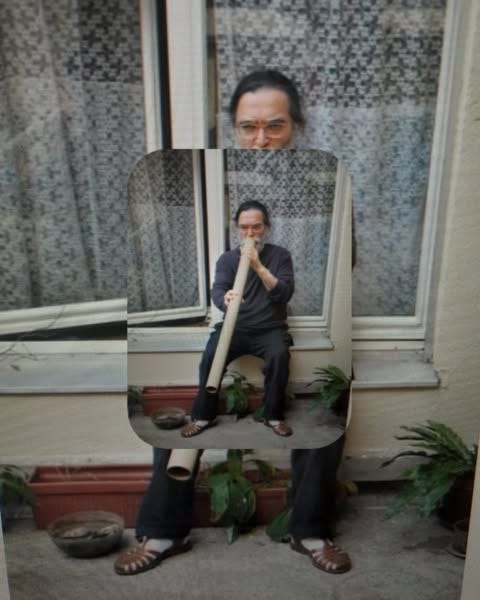
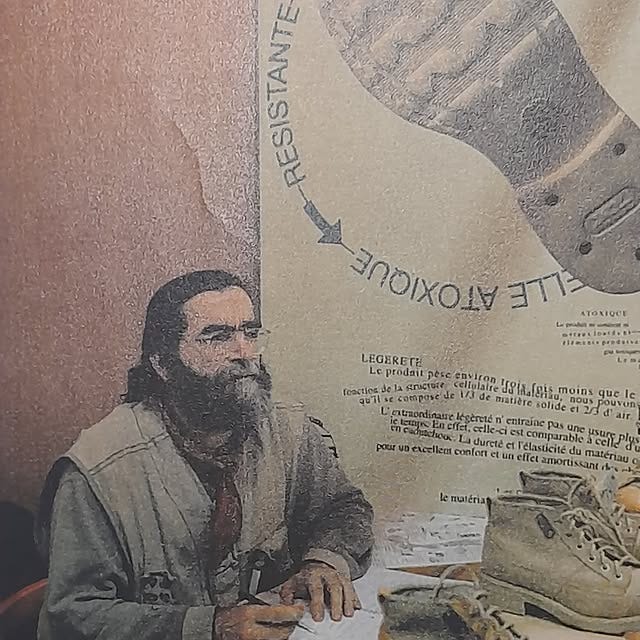


Just superb